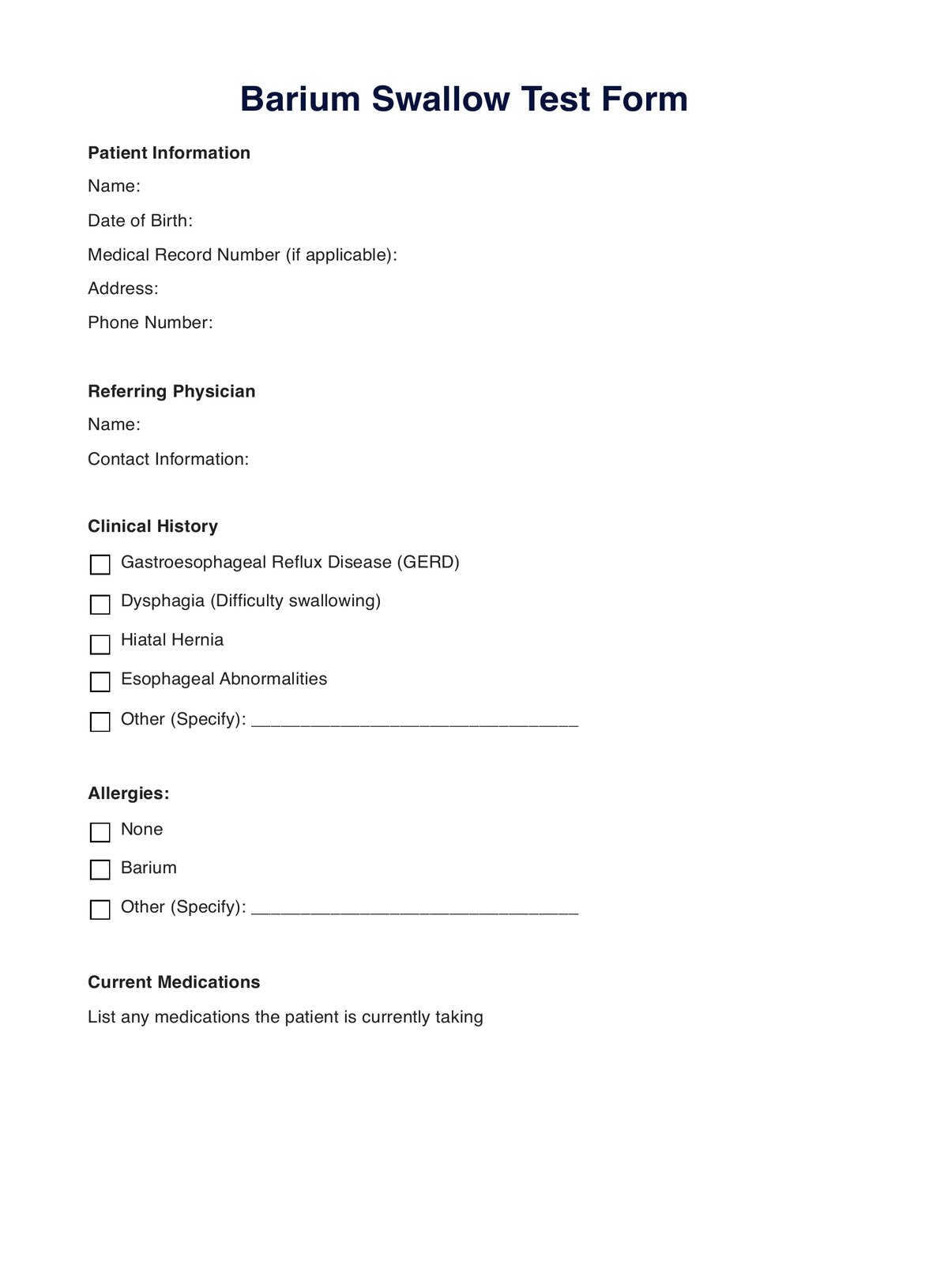Gastroenterologists, otolaryngologists, surgeons, and primary care physicians typically request Barium Swallow Tests based on patient symptoms and medical history.

Barium Swallow
Learn about the Barium Swallow Test's uses, procedure, and results. Get insights into this diagnostic tool for upper GI tract conditions.
Use Template
Barium Swallow Template
Commonly asked questions
Barium Swallow Tests investigate conditions like GERD, dysphagia, hiatal hernias, esophageal strictures, and more, helping diagnose upper GI tract issues.
Patients ingest a barium sulfate solution, which coats the upper GI tract. X-ray imaging captures real-time images to visualize and diagnose GI conditions.
EHR and practice management software
Get started for free
*No credit card required
Free
$0/usd
Unlimited clients
Telehealth
1GB of storage
Client portal text
Automated billing and online payments











